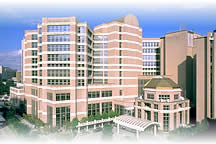 |
||||||||||
Date: August 12, 2024
by Chaya Venkat
Related Articles:
Mitoxantrone plus FCR;
Mitoxantrone plus FCR - Brit. Version.

We are pleased to report that Dr. Stefan Faderl, the principal investigator at M. D. Anderson Cancer Center for the FCR+M and Neulasta clinical trial, has responded to our letter and the review of the clinical trial we published yesterday (see Mitoxantrone plus FCR to get the whole story). His detailed and thoughtful response is published in the box below, together with an exchange of emails on the subject of cardiac toxicity. We thank Dr. Faderl for his time and attention. There is a great deal of common ground between patients looking for better therapy options and researchers who spend their lives looking for better answers. The process works a whole lot better when patient groups participate actively in their own healthcare decisions.
We have also reproduced Dr. Terry Hamblin's very relevant post on the ACOR discussion group, in response to a reader's questions.
We are more than willing to concede that the addition of mitoxantrone to the FCR combo has scientific merit, and is worth exploring.
However, in this era when many more options are becoming available for untreated CLL patients, we question the recruitment of chemo-naïve patients across the board. Patients with good prognosis, as determined by modern prognostic assessment (Prognosis at Diagnosis), clearly have many other therapy options that might give them better bang for their buck. We hope the European version of the FCR+M trial will take this point into consideration as they define their recruitment criteria.
Translating strategies used in more acute leukemias wholesale to the much more indolent CLL needs to be thought through carefully. Dr. Terry Hamblin addresses this issue in his post a lot better than we can. Besides his research credentials and medical expertise, Dr. Hamblin has the rare ability to communicate clearly with a layperson audience. We urge you to read his comments as well as his earlier article written exclusively for CLL Topics: Are We there Yet?
We want to highlight our concerns on one aspect of this trial that was not addressed sufficiently in Dr. Faderl’s original response.
We have the following requests for the FRC+M clinical team at MD Anderson:
You can read our comparison of the M. D. Anderson protocol discussed here with information we have on a multi-center British trial launched in 2024: FMC plus R, Brit. Version.
Date: August 12, 2024
Dear XXX:
You probably know that Chaya has an article about this new trial on her website. It is worth reading it.
The idea that mitoxantrone (or mitozantrone depending on which country you live in) should be added comes form a Spanish trial that showed a complete response rate to FCM that was as good as Houston was getting with FCR. Since adding rituximab to any regimen seems to add another 10% responses to what you get without it, it seemed a good idea to try FCM-R. This combination has been tried in follicular lymphoma without too much toxicity.
Mitozantrone has been around a long time, probably 20 years. It is used in the treatment of AML and recently got a license for the treatment of MS where it is used as an immunosuppressive. It is one of those antibiotics produced by bacteria in the soil and it is similar to adriamycin, which is the H in CHOP. The differences between mitozantrone and adriamycin is that the former tends to produce less hair loss, and persists rather longer in the blood. The major side effects of nausea and vomiting and bone marrow suppression are not much different. All hematologists are very familiar with its use. Like all of these drugs it causes damage to the heart. The effect is seen when a threshold cumulative dose is reached. This usually works out at about 9-10 doses depending on the dose given, whether cyclophospahmide is also being used, whether previous adriamycin has been given and the state of the heart beforehand. The types of damage are cardiomyopathy - where all of the oomph goes out of the heart muscle, causing heart failure, and this is usually irreversible, and arrhythmias which can be fatal.
However, when it is used judiciously it can prove a very useful drug.
In the UK we are preparing for a new trial which will compare FCR with FCM-R in previously untreated patients.
The philosophy behind this strategy is based on the fact that we are not curing patients with CLL except with an allograft, which is hazardous, unavailable to many and may lead to a life of chronic illness. In the field of acute leukemia it is clear that no-one is cured unless they get a good complete remission. In CLL, until recently very few patients got a complete remission, even by the standards of the NCI guidelines which allowed a relatively large volume of residual disease compared to what is allowed in AML. So, a more complete remission was aimed at and measured by assessing minimal residual disease, either by PCR or four color flow. Even FCR fails to produce PCR negative disease in a substantial proportion, so according to this reasoning more treatment is needed.
What is lacking from this strategy is the fact that in order to live a normal lifespan many patients with CLL do not need their CLL to be cured, just controlled.
According to the successful strategy in AML what determines whether or not a patients is cured is getting the best possible remission the first time the leukemia is treated. Therefore, the aim of treatment is to get the highest possible remission rate and the longest possible first remission. Applying that strategy to CLL it makes sense to have an end point of trials as response rate and progression free survival.
But is it valid to adopt the AML strategy in treating CLL? Clearly there are some patients for whom this is valid. There are some patients who do progress rapidly. When these are treated in a conventional way the path is one of a series of remissions, each shorter and less complete than the last with increasing toxicity and desperation. The patient tends to die after a few years of infection or autoimmunity because the immune system is exhausted or of uncontrollable drug-resistant disease. However, some patients need some sort of treatment because they are becoming symptomatic, but even quite simple treatment keeps them well and they survive to live for a natural life span. When these patients are treated with stronger drugs their disease tends to respond more rapidly and more completely than the other sort.
The recent advances in prognostic markers allows us to distinguish these types of disease fairly well. In my opinion it is dangerous to mix them up in clinical trials. If the treatments were without side effects it would not matter, but there is always a price to pay with these new, more effective drugs. You might end up inflicting side effects on patients who never needed the drugs in the first place. Another problem is less obvious. With an unknown leavening of good risk patients, a treatment that's really designed for poor risk patients might appear better than it really is.
The UK trial is designed to exclude good risk patients from the study. We are still trying to decide what we should study for this group.
Terry Hamblin
________
 Enter Keywords: |
———
Disclaimer: The content of this website is intended for information only and is NOT meant to be medical advice. Please be sure to consult and follow the advice of your doctors on all medical matters.
Copyright Notice:
Copyright © 2024-2007 CLL Topics, Inc. All Rights Reserved.
All materials contained on this site are protected by United States copyright law and may not be reproduced, distributed, transmitted, displayed, published or broadcast without the prior written permission of CLL Topics, Inc. You may not alter or remove any trademark, copyright or other notice from copies of the content.
However, you may download and print material from CLLTopics.org exclusively for your personal, noncommercial use.
———
